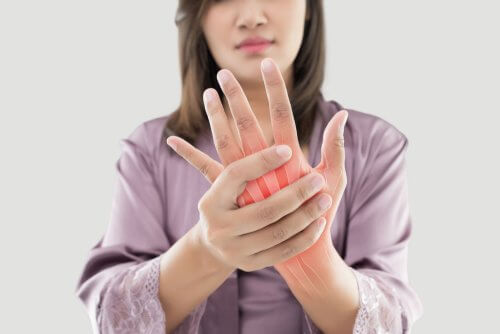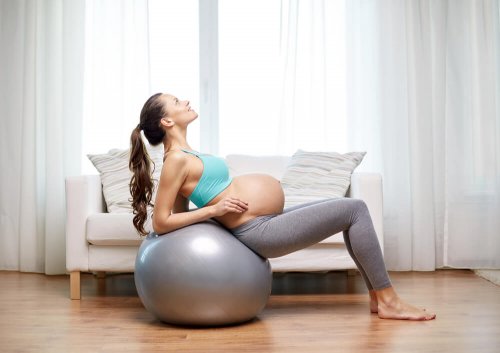Treating Joint Pain During Pregnancy

The hormonal and bodily changes a woman undergoes during pregnancy greatly contribute to all sorts of discomfort. Treating fluid retention, back pain, and joint pain during pregnancy can be a challenge. So, continue reading to find out about some ways to obtain relief.

Joint pain during pregnancy usually occurs due to weight gain. Those extra pounds exert enormous pressure on the knees and lead to pain. The same is true of other body joints. Thus, the symptoms of women with arthritis problems become more pronounced during pregnancy.
In the event that you also suffer from fluid retention, you may also experience tingling, numbness, and pain in the fingers. When it comes to severe pain, there’s also numbness of the hands and feet as well as swelling of the hands or face. Go ahead and consult your doctor if you feel any of these symptoms as they could be due to preeclampsia.
Treating joint pain during pregnancy
Here are some of the best ways to treat joint pain during pregnancy. As we said above, consult a specialist to get a personalized treatment plan according to your physical condition, medical history, and personal needs if you suffer from it.
1. Regular physical exercise

You must lead an active life when you’re pregnant as it’s a good way to keep your joints flexible. Some good options for this purpose that can also reduce discomfort are:
- Walking
- Swimming
- Doing yoga and Pilates
2. Therapeutic massages
Therapeutic massages can help minimize joint pain, as well as preventing fluid retention. Ask your doctor what kind of massages are available to you during pregnancy.
3. Hot-cold therapy
Take a hot shower to relieve joint pain during pregnancy. Another option is to use electric pads or blankets as these can ease the joints. You may also opt for an ice pack.
4. Feet up
Raising your legs can help you relax them and decrease fluid retention. A good way to do this is by lying on the bed, with your legs resting against the wall. Wait 10 minutes before changing position.
5. Regular breaks are good for treating joint pain

Joint pain during pregnancy can be accentuated if you don’t take regular breaks. Try to incorporate restful moments with which to ease the load on your joints and muscles.
6. Avoid lifting heavy things
Lifting heavy loads can affect your body and exacerbate joint pain. Keep in mind that your bones, muscles, and joints already carry a few extra kilos during pregnancy, so don’t add more weight to them.
Discover: Incredible Natural Remedies for Joint Pain
7. Intake of Omega-3
Some studies indicate that regular consumption of foods rich in Omega 3 or supplements could help to alleviate joint pain.
8. Wear comfortable shoes
Comfortable shoes are the best way to avoid adding more tension to your feet, so avoid high heels. Opt for sneakers or other comfortable shoes.
Medically treating joint pain

Consult your doctor if you don’t improve by following the aforementioned advice. They can prescribe medications that are safe during pregnancy — acetaminophen or paracetamol.
The use of creams with methyl salicylate, gamma-linolenic acid (GLA), and turmeric aren’t recommended during pregnancy.
Also, don’t use any kind of medication without a prescription. You must be extra careful about the medication and topical creams you use during pregnancy.
Joint pain during pregnancy can be quite annoying so consult your doctor for a prescription for treating your pain.
Thanks for reading.
All cited sources were thoroughly reviewed by our team to ensure their quality, reliability, currency, and validity. The bibliography of this article was considered reliable and of academic or scientific accuracy.
- A.D.A.M, Inc. (2013). Gamma-linoleic acid. Retrieved from https://umm.edu/health/medical/altmed/supplement/gammalinolenic-acid
- Bernstein, S. (n.d.). Benefits of massage. Retrieved from https://www.arthritistoday.org/arthritis-treatment/natural-and-alternative-treatments/remedies-and-therapies/benefits-of-massage.php
- Ellis, M. E. (2013, Julio 30). Natural relief from arthritis pain. Retrieved from https://www.healthline.com/health/osteoarthritis/arthritis-natural-relief#Overview1 Gruenwald, J., Brendler, T., & Jaenicke, C. (Eds.). (2007). PDR for herbal medicines (4th ed.).
- Montvale, NJ: Thomson Healthcare Inc. KidsHealth. (2012). Questions and answers. Retrieved from https://kidshealth.org/parent/question/infants/ankles.html#cat20230
- Pietrangelo, A. (2014). Arthritis during pregnancy: Symptoms, treatments, and remission. Retrieved from https://www.healthline.com/health-slideshow/pregnancy-arthritis#1
- University of Washington Department Orthopaedics and Sports Medicine. (n.d.). Pregnancy and arthritis. Retrieved from https://www.orthop.washington.edu/?q=patient-care/articles/arthritis/pregnancy-and-arthritis.html
This text is provided for informational purposes only and does not replace consultation with a professional. If in doubt, consult your specialist.








